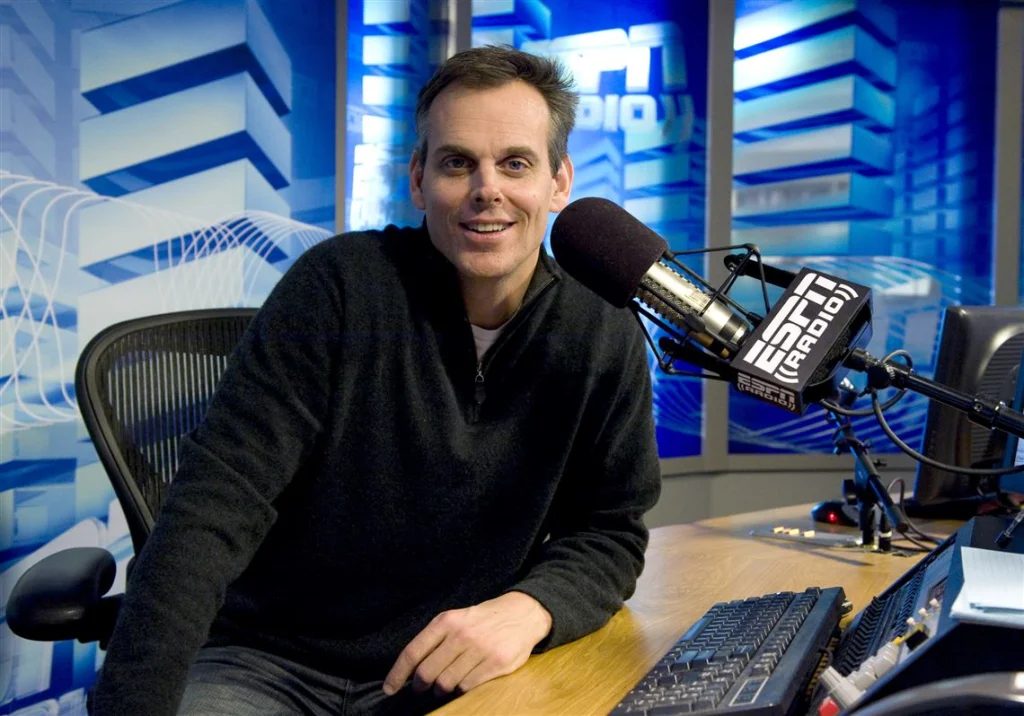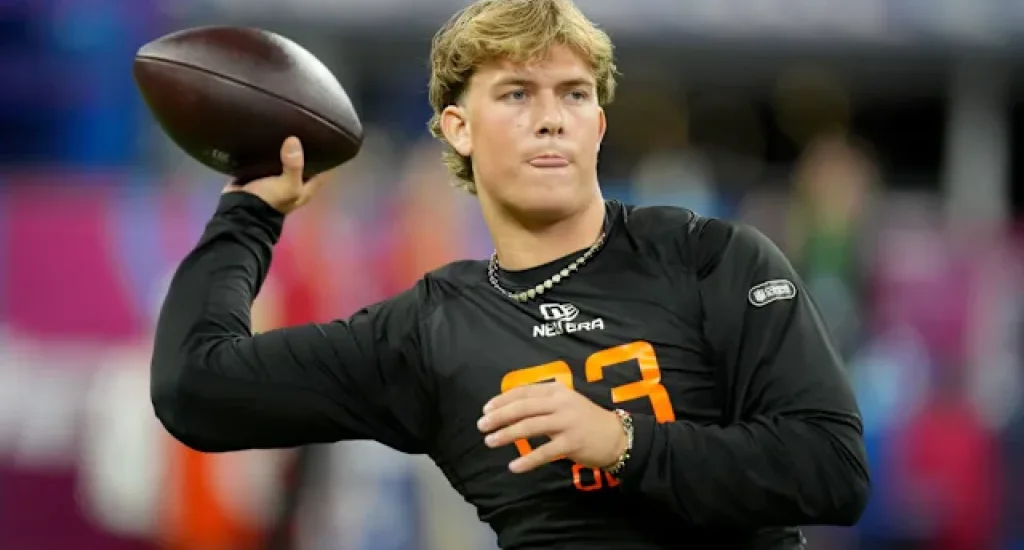
Colin Cowherd Twitter: The Sports Media Maverick Who Masters Controversy
How the polarizing FS1 host turned social media into his most powerful platform — and why millions can't look away, even when they disagree
In the chaotic ecosystem of sports Twitter, where hot takes burn out as quickly as they ignite and authenticity is increasingly rare, Colin Cowherd has built something remarkable: a social media presence that generates more engagement through strategic provocation than most sports media personalities achieve through years of careful brand building.
His Twitter account isn't just a promotional tool for "The Herd" on FS1 — it's a masterclass in understanding what makes sports discourse tick in 2025. Cowherd has perfected the art of the calculated controversy, the well-timed contrarian take, and the cultural observation that positions sports analysis as something bigger than just games and statistics.
Love him or hate him — and sports fans decidedly do both with passionate intensity — Colin Cowherd's Twitter strategy has redefined what it means to be a sports media personality in the digital age. And whether his approach represents the future of sports commentary or its slow degradation depends entirely on who you ask.
The Provocateur's Playbook
Cowherd's Twitter presence is built on a simple formula that he's refined over years of broadcasting: make bold claims that challenge conventional wisdom, frame them with just enough sophistication to seem thoughtful rather than trollish, and never apologize when the backlash arrives. Because the backlash, of course, is the point.
According to Social Blade analytics, Cowherd's Twitter account consistently generates engagement rates that exceed many sports personalities with larger followings. His tweets routinely spark thousands of replies, quote tweets, and extended debates that keep his name trending long after the initial post.
This approach mirrors successful media strategies across different domains. Just as Eric Bickel built his sports radio presence through personality-driven content, Cowherd has understood that in modern media, being memorable matters more than being universally liked.
"Colin understands that engagement is the currency of social media. It doesn't matter if people are agreeing with you — it matters if they're talking about you."
— Digital media analyst quoted by Sports Business Journal
The Anatomy of a Cowherd Tweet
Scroll through Cowherd's Twitter feed and patterns emerge quickly. His most effective tweets typically fall into several categories, each designed to maximize engagement through different psychological triggers:
- The Contrarian Take: "Patrick Mahomes is great, but he's not top 5 all-time yet" — statements that challenge popular consensus and force fans to defend their positions
- The Cultural Comparison: Analogies between sports figures and business leaders, politicians, or cultural icons that elevate sports discourse beyond the field
- The Generational Divide: Comments that pit older sports fans against younger ones, generating intergenerational debate
- The Market-Driven Analysis: Framing player evaluation through market economics rather than pure athletic ability
Each approach serves a specific purpose: generate conversation, establish thought leadership, and keep Cowherd's name circulating through sports media ecosystems. It's strategic provocation masquerading as spontaneous commentary.
November 2025: The Twitter Strategy Evolves

As sports media fragments across platforms and attention spans shrink, Cowherd has adapted his Twitter strategy to maintain relevance. Throughout 2025, his account has increasingly incorporated video clips from "The Herd," creating a symbiotic relationship where Twitter drives tune-in and broadcast content fuels social media discussion.
He's also become more willing to engage directly with critics rather than simply broadcasting takes into the void. This creates the appearance of accessibility — the sense that Cowherd is participating in conversations rather than lecturing to audiences. Whether this represents genuine engagement or calculated image management is open to interpretation.
According to Nielsen's latest sports media report, shows with active social media presences generate significantly higher ratings among younger demographics. Cowherd's Twitter activity isn't separate from his broadcast success — it's fundamental to it.
This integration of platforms reflects broader trends in how media personalities build and maintain relevance. Similar to how Paul Dehner Jr. became the trusted voice for Cincinnati Bengals fans through consistent multi-platform presence, Cowherd has understood that modern sports media requires omnipresence rather than excellence on any single platform.
The Criticism and the Defense
Cowherd's Twitter presence attracts substantial criticism, much of it valid. Critics argue that his takes prioritize controversy over accuracy, that he cherry-picks data to support predetermined narratives, and that his contrarian positions often age poorly as actual events unfold differently than his predictions.
His infamous takes on certain players, markets, and sports have become meme material — evidence used by detractors to argue that Cowherd's analysis should be taken less seriously than his platform suggests. When predictions fail spectacularly, the receipts get pulled and circulated widely across sports Twitter.
But defenders argue this misses the point entirely. Cowherd isn't attempting to be a traditional beat reporter or statistical analyst — he's providing entertainment wrapped in sports analysis, creating conversations rather than definitively ending them. His job isn't to always be right; it's to always be interesting.
"People who criticize Colin for bad takes are missing what he's actually doing. He's creating content that generates discussion. That's the whole business model."
— Sports media executive speaking on background
The Business of Being Polarizing
Cowherd's Twitter strategy reflects uncomfortable truths about modern media economics. In an attention economy where advertisers care more about engagement metrics than accuracy rates, being polarizing is more valuable than being correct. A take that generates 10,000 angry replies is worth more than thoughtful analysis that generates 500 appreciative likes.
This incentive structure shapes not just Cowherd's approach but increasingly defines sports media broadly. Young personalities study his Twitter strategy the way previous generations studied broadcasting techniques, understanding that career advancement in 2025 often depends more on social media virality than traditional journalistic excellence.
The Cultural Commentary Angle
What separates Cowherd from purely provocative sports personalities is his willingness to frame sports through broader cultural lenses. His Twitter often ventures beyond game analysis into observations about leadership, organizational culture, market dynamics, and generational differences — positioning sports as microcosms of larger societal trends.
This approach attracts audiences who might not be hardcore sports fans but appreciate the intersection of athletics and culture. It also provides cover for takes that might otherwise seem shallow — wrapping hot takes in intellectual frameworks that suggest deeper thinking.
Whether this represents genuine insight or sophisticated window-dressing depends largely on individual perspective. But it's undeniably effective at generating engagement across demographics that typically don't overlap in sports media consumption.
The Comparison to Political Media
Cowherd's Twitter strategy bears striking resemblance to approaches used by successful political commentators. The same tactics — strategic controversy, contrarian positioning, cultural framing, and calculated engagement with critics — define how personalities like Eric Daugherty built political media presence through social platforms.
This isn't coincidental. The attention economy operates by similar rules regardless of subject matter. Whether you're analyzing elections or evaluating quarterbacks, the social media strategies that generate engagement remain remarkably consistent: stake out distinctive positions, defend them confidently, and never let data completely get in the way of a compelling narrative.
What Colin Cowherd's Twitter Reveals About Sports Media
The success of Cowherd's social media presence says something important about where sports media stands in 2025. Traditional journalism values — accuracy, fairness, comprehensive reporting — are increasingly secondary to entertainment value and engagement metrics in determining career success and platform reach.
This shift disturbs purists who remember when sports journalism meant beat reporting, investigative stories, and analysis grounded in statistical rigor rather than hot takes designed for virality. But it thrills entrepreneurs who see opportunity in the democratization of sports commentary and the reduced importance of institutional gatekeepers.
Cowherd exists at the intersection of these competing visions for sports media's future. He has institutional backing through FS1, providing credibility and resources that independent creators lack. But he operates with the scrappy engagement tactics of digital-native personalities who built followings outside traditional media structures.
"Colin represents the mainstreaming of tactics that started with independent creators. He proved you could be provocative, entertaining, and wildly successful without pretending to be objective."
— Sports media researcher at Northwestern University
The Long-Term Sustainability Question

As Cowherd continues dominating sports Twitter engagement in November 2025, questions emerge about the long-term sustainability of controversy-driven media strategies. Can personalities maintain relevance when their primary tactic is provocation? Does constant contrarianism eventually exhaust audiences who tire of predictable unpredictability?
Some evidence suggests audience fatigue with hot-take culture. Younger sports fans increasingly gravitate toward analytical content, statistical deep-dives, and personalities who prioritize accuracy over controversy. The same social media platforms that enabled Cowherd's rise now host competitors offering fundamentally different approaches to sports commentary.
But Cowherd has demonstrated remarkable adaptability throughout his career, evolving his approach as media landscapes shift. His Twitter strategy in 2025 looks different than it did in 2020, incorporating more video, more direct engagement, and slightly more measured takes that maintain controversy without crossing into pure trolling.
The Verdict on Colin Cowherd Twitter
Evaluating Colin Cowherd's Twitter presence ultimately requires separating what you think sports media should be from what it actually is in 2025. If you believe sports commentary should prioritize accuracy, nuance, and fair-minded analysis, Cowherd's approach likely seems problematic — a dumbing down of discourse in pursuit of engagement metrics.
But if you view sports media as entertainment first and journalism second, his strategy is difficult to criticize. He's built massive audiences, generated countless hours of sports debate, and created a personal brand that transcends any single platform or employer. By the metrics that matter in modern media — reach, engagement, revenue generation — he's wildly successful.
Perhaps the most honest assessment is that Colin Cowherd's Twitter doesn't represent sports media's future or its past, but rather its complicated present. He operates in the tension between traditional broadcasting values and digital-native tactics, between thoughtful analysis and strategic provocation, between journalism and entertainment.
And whether that's something to celebrate or lament probably depends on whether you're engaging with his tweets in agreement, in outrage, or in the knowing awareness that either reaction serves exactly the purpose he intended.
In November 2025, as another generation of sports media personalities studies his approach and debates its merits, one thing remains undeniable: Colin Cowherd figured out how to make Twitter work for him in ways that few sports personalities have matched. Love him, hate him, or land somewhere in between — you're probably talking about him. And in the attention economy of modern sports media, that's the only metric that ultimately matters.
Related Articles



Eric Bickel's Twitter Presence: The Steak King and Sauna King of Sports Radio
November 03, 2025

